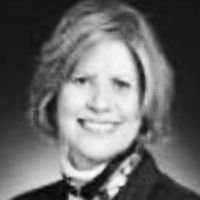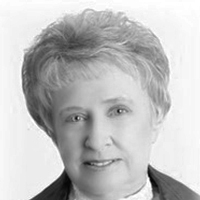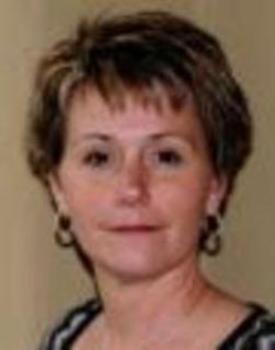Abstract
The purpose of a traditional articulation test is to assess phonological and articulatory development. Theoretically, the results of two different articulation tests applied to the same child should yield similar results (Schissel & James, 1979). However, previous investigations have suggested that this may not be the case (Ogburn et al., 2008). In this investigation, two groups of children, ages 3 and 4, were tested with two articulation assessments, the Arizona Articulation Proficiency Scale-Third Revision (Arizona-3; Fudala, 2000) and the Clinical Assessment of Articulation and Phonology (CAAP; Secord & Donohue, 2002). Results suggested a statistically significant difference was found between the two instruments with children scoring 4.3 points lower on the CAAP as compared to the Arizona-3. Several explanations for this discrepancy are examined and include test composition and normative data differences.
Introduction
Speech-language pathologists (SLPs) administer tests of articulation to measure the accuracy of articulatory behavior and phonological development. Generally speaking, if two different, standardized, age-appropriate tests of articulation are administered under similar conditions, most clinicians expect that the outcomes will be similar (Schissel & James, 1979). However, several previous investigations have suggested that this is not necessarily the case.
Schissel and James (1979) conducted an investigation to determine if differences existed between the standardized scores of two articulation tests, specifically the Deep Test of Articulation (DTA; McDonald, 1964) and the Arizona Articulation Proficiency Scale-Revised (AAPS; Fudula, 1974). They evaluated the participants' performance for individual phonemes, as well as global test performance, and found significant differences between the two assessment instruments. Most interestingly, these researchers found accuracy differences for 8.2% of the phonemes tested, but this effect was predominate throughout the participant sample (i.e., approximately 83% of children tested displayed this trend), which indicates that the performance of children assessed varied between the two instruments and this effect could potentially affect the clinician's decision whether to treat the child. The authors go on to note that out of 29 participants, 18 displayed more accurate production on the DTA, whereas 14 participants demonstrated greater accuracy on the AAPS. Also, of the participants tested, 8 children demonstrated more accurate performance on some phonemes of the DTA and some from the AAPS, and only five children presented with performance that was similar on both measures.
The investigators also indicated that the DTA identified three children in need of treatment, whereas the AAPS was unable to make these identifications. Based on these findings, Schissel and James suggested that the scoring process of the AAPS may be deficient for the following reasons: (1) the AAPS assumes that a child will demonstrate consistently correct production, but this appears to be far from the case, based on the results of the DTA, (2) the number of trials from the AAPS is too low, thus giving the child either 0% or 100% correct production as compared to the DTA, especially with consonant phonemes known to be frequently in error, and (3) the AAPS does not take into account the frequency of misarticulated consonants as compared to vowels.
The limitation of the AAPS notwithstanding, Schissel and James suggested that when examining overall test performance, clinicians would likely come to a similar conclusion regarding the need for treatment regardless of which test was administered. One reason for this could be related to the large number of phonemes the children produced in a consistent way between the tests. In fact, 91.8% of items were produced consistently between the AAPS and the DTA.
A Comparison of Articulatory Assessment: The Arizona Articulation Proficiency Scale-3 & the Clinical Assessment of Articulation and Phonology
November 10, 2008
Related Courses
1
https://www.speechpathology.com/slp-ceus/course/textbook-evaluating-and-enhancing-children-11104
Textbook: Evaluating and Enhancing Children's Phonological Systems - Research and Theory to Practice, Third Edition
This course is based on the third edition of the textbook Evaluating & Enhancing Children's Phonological Systems: Research & Theory to Practice by Barbara W. Hodson. It presents the knowledge and skills needed to plan evaluations and implement optimal treatment for individuals with highly unintelligible speech. Topics also include phonetics, phonological development/speech sound acquisition, an overview of the diagnostic process, and various intervention approaches, including the Cycles Approach and its application to bilingual/multilingual individuals and special populations.
textual, visual
129
USD
Subscription
Unlimited COURSE Access for $129/year
OnlineOnly
SpeechPathology.com
www.speechpathology.com
Textbook: Evaluating and Enhancing Children's Phonological Systems - Research and Theory to Practice, Third Edition
This course is based on the third edition of the textbook Evaluating & Enhancing Children's Phonological Systems: Research & Theory to Practice by Barbara W. Hodson. It presents the knowledge and skills needed to plan evaluations and implement optimal treatment for individuals with highly unintelligible speech. Topics also include phonetics, phonological development/speech sound acquisition, an overview of the diagnostic process, and various intervention approaches, including the Cycles Approach and its application to bilingual/multilingual individuals and special populations.
11104
Online
PT990M
Textbook: Evaluating and Enhancing Children's Phonological Systems - Research and Theory to Practice, Third Edition
Presented by Barbara W. Hodson, PhD
Course: #11104Level: Advanced16.5 Hours
AG Bell - LSLS/16.5 Domain 3; ASHA/1.65 Advanced, Professional; Calif SLPAB/16.5; IACET/1.7; Kansas LTS-S1370/16.5; SAC/16.5
This course is based on the third edition of the textbook Evaluating & Enhancing Children's Phonological Systems: Research & Theory to Practice by Barbara W. Hodson. It presents the knowledge and skills needed to plan evaluations and implement optimal treatment for individuals with highly unintelligible speech. Topics also include phonetics, phonological development/speech sound acquisition, an overview of the diagnostic process, and various intervention approaches, including the Cycles Approach and its application to bilingual/multilingual individuals and special populations.
2
https://www.speechpathology.com/slp-ceus/course/20q-dynamics-school-based-speech-10002
20Q: Dynamics of School-Based Speech and Language Therapy Variables
This course reviews dynamics of speech and language therapy variables such as session frequency, intervention intensity, and dosage, and how these are impacted by different service delivery models. It discusses how therapy outcomes are related to therapy quality, IEP goals, and SLP-level variables such as job satisfaction and caseload size.
textual, visual
129
USD
Subscription
Unlimited COURSE Access for $129/year
OnlineOnly
SpeechPathology.com
www.speechpathology.com
20Q: Dynamics of School-Based Speech and Language Therapy Variables
This course reviews dynamics of speech and language therapy variables such as session frequency, intervention intensity, and dosage, and how these are impacted by different service delivery models. It discusses how therapy outcomes are related to therapy quality, IEP goals, and SLP-level variables such as job satisfaction and caseload size.
10002
Online
PT60M
20Q: Dynamics of School-Based Speech and Language Therapy Variables
Presented by Kelly Farquharson, PhD, CCC-SLP, Anne Reed, MS, CCC-SLP
Course: #10002Level: Advanced1 Hour
AG Bell - LSLS/1.0 Domain 3, Domain 7; ASHA/0.1 Advanced, Professional; Calif SLPAB/1.0; IACET/0.1; Kansas LTS-S1370/1.0; SAC/1.0
This course reviews dynamics of speech and language therapy variables such as session frequency, intervention intensity, and dosage, and how these are impacted by different service delivery models. It discusses how therapy outcomes are related to therapy quality, IEP goals, and SLP-level variables such as job satisfaction and caseload size.
3
https://www.speechpathology.com/slp-ceus/course/sleuthing-for-s-and-r-9237
Sleuthing for /s/ and /r/: Facilitating Strategies for Residual Sound Errors
This course will discuss the rationale and strategies for teaching production of /s/ and /r/ for upper elementary school-age children and older. Errors on these two sounds are considered residual when production continues to be inaccurate beyond the developmental age of acquisition.
auditory, textual, visual
129
USD
Subscription
Unlimited COURSE Access for $129/year
OnlineOnly
SpeechPathology.com
www.speechpathology.com
Sleuthing for /s/ and /r/: Facilitating Strategies for Residual Sound Errors
This course will discuss the rationale and strategies for teaching production of /s/ and /r/ for upper elementary school-age children and older. Errors on these two sounds are considered residual when production continues to be inaccurate beyond the developmental age of acquisition.
9237
Online
PT120M
Sleuthing for /s/ and /r/: Facilitating Strategies for Residual Sound Errors
Presented by Lynn Berk, MA, CCC-SLP
Course: #9237Level: Introductory2 Hours
AG Bell - LSLS/2.0 Domain 3; ASHA/0.2 Introductory, Professional; Calif SLPAB/2.0; IACET/0.2; Kansas LTS-S1370/2.0; SAC/2.0
This course will discuss the rationale and strategies for teaching production of /s/ and /r/ for upper elementary school-age children and older. Errors on these two sounds are considered residual when production continues to be inaccurate beyond the developmental age of acquisition.
4
https://www.speechpathology.com/slp-ceus/course/20q-continuum-approach-for-sorting-10008
20Q: A Continuum Approach for Sorting Out Processing Disorders
There is a good deal of confusion among audiologists and speech-language pathologists when a diagnosis of “processing disorder” is introduced. This course presents a continuum model to differentiate processing disorders into acoustic, phonemic, or linguistic aspects so that assessment and treatment can become more focused and effective. The roles of audiologists and SLPs in relation to processing disorders are described, and compensatory strategies for differing aspects of processing are presented.
textual, visual
129
USD
Subscription
Unlimited COURSE Access for $129/year
OnlineOnly
SpeechPathology.com
www.speechpathology.com
20Q: A Continuum Approach for Sorting Out Processing Disorders
There is a good deal of confusion among audiologists and speech-language pathologists when a diagnosis of “processing disorder” is introduced. This course presents a continuum model to differentiate processing disorders into acoustic, phonemic, or linguistic aspects so that assessment and treatment can become more focused and effective. The roles of audiologists and SLPs in relation to processing disorders are described, and compensatory strategies for differing aspects of processing are presented.
10008
Online
PT60M
20Q: A Continuum Approach for Sorting Out Processing Disorders
Presented by Gail J. Richard, PhD, CCC-SLP
Course: #10008Level: Intermediate1 Hour
AG Bell - LSLS/1.0 Domain 3, Domain 7; ASHA/0.1 Intermediate, Professional; Calif SLPAB/1.0; IACET/0.1; Kansas LTS-S1370/1.0; SAC/1.0
There is a good deal of confusion among audiologists and speech-language pathologists when a diagnosis of “processing disorder” is introduced. This course presents a continuum model to differentiate processing disorders into acoustic, phonemic, or linguistic aspects so that assessment and treatment can become more focused and effective. The roles of audiologists and SLPs in relation to processing disorders are described, and compensatory strategies for differing aspects of processing are presented.
5
https://www.speechpathology.com/slp-ceus/course/20q-evaluation-and-treatment-speech-8729
20Q: Evaluation and Treatment of Speech/Resonance Disorders and Velopharyngeal Dysfunction
Children with speech and resonance disorders (hypernasality, hyponasality, and cul-de-sac resonance) and/or nasal emission present challenges for speech-language pathologists (SLPs) in all settings. This article will help participants to recognize resonance disorders and the characteristics of velopharyngeal dysfunction, and provide appropriate management.
textual, visual
129
USD
Subscription
Unlimited COURSE Access for $129/year
OnlineOnly
SpeechPathology.com
www.speechpathology.com
20Q: Evaluation and Treatment of Speech/Resonance Disorders and Velopharyngeal Dysfunction
Children with speech and resonance disorders (hypernasality, hyponasality, and cul-de-sac resonance) and/or nasal emission present challenges for speech-language pathologists (SLPs) in all settings. This article will help participants to recognize resonance disorders and the characteristics of velopharyngeal dysfunction, and provide appropriate management.
8729
Online
PT60M
20Q: Evaluation and Treatment of Speech/Resonance Disorders and Velopharyngeal Dysfunction
Presented by Ann W. Kummer, PhD, CCC-SLP
Course: #8729Level: Intermediate1 Hour
ASHA/0.1 Intermediate, Professional; Calif SLPAB/1.0; IACET/0.1; Kansas LTS-S1370/1.0; SAC/1.0
Children with speech and resonance disorders (hypernasality, hyponasality, and cul-de-sac resonance) and/or nasal emission present challenges for speech-language pathologists (SLPs) in all settings. This article will help participants to recognize resonance disorders and the characteristics of velopharyngeal dysfunction, and provide appropriate management.



